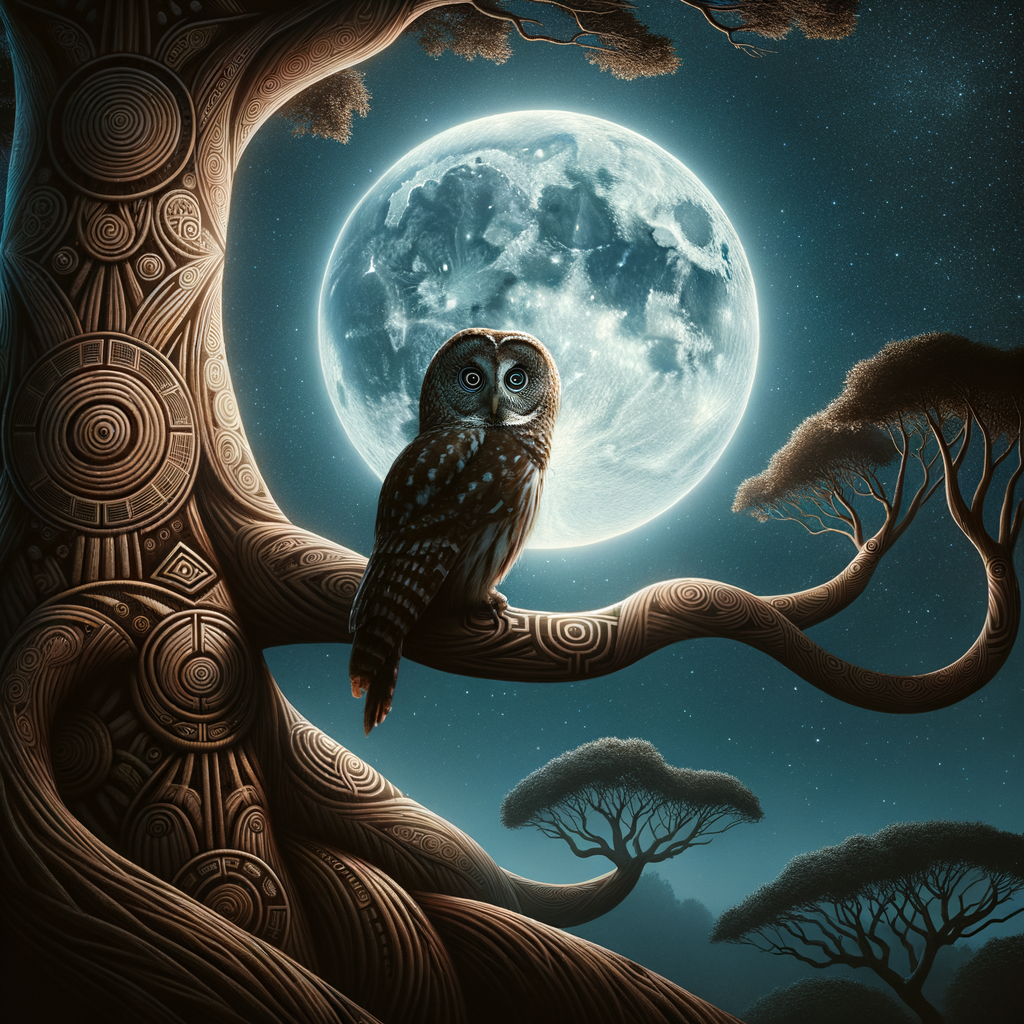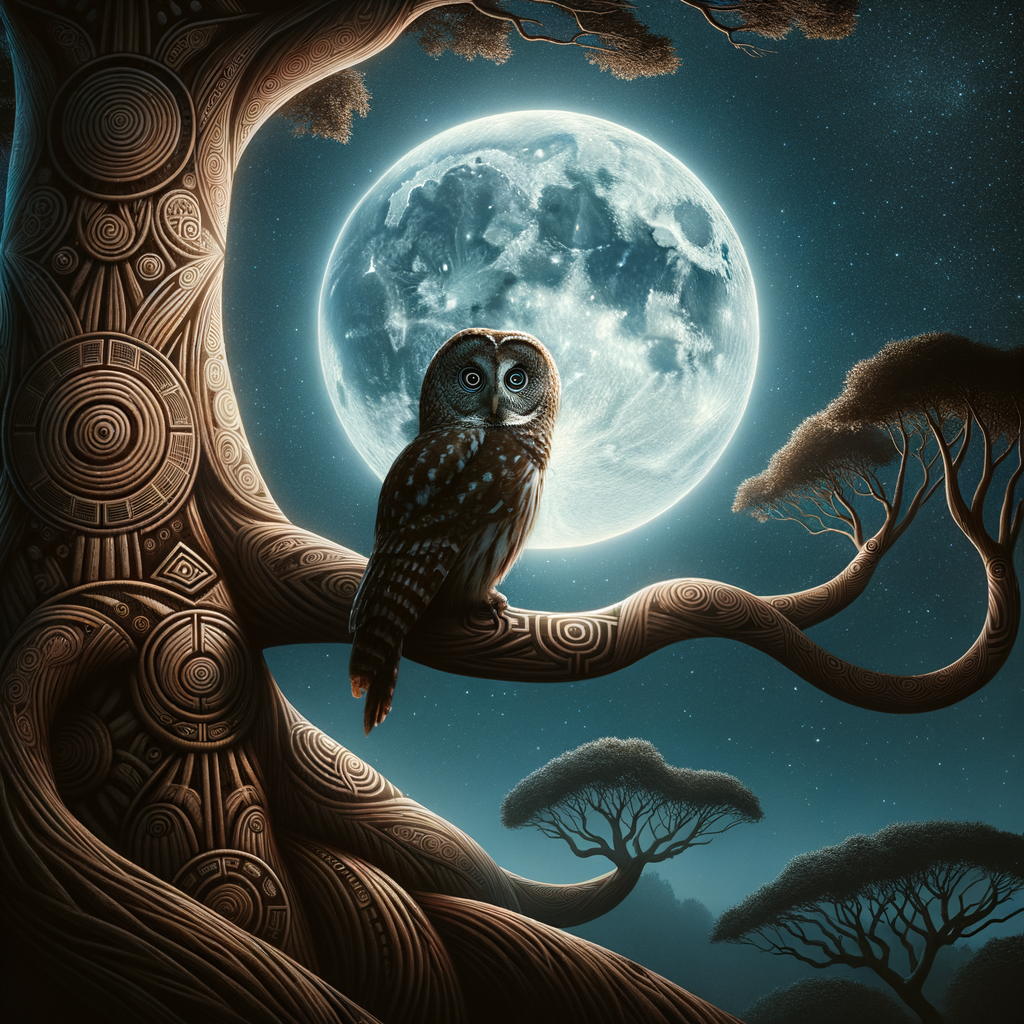
The Role of Owls in Indigenous Cultures
Owls have a special place in many Indigenous cultures. These birds are often seen as wise and mysterious. Different tribes have unique stories and beliefs about owls.
For example, in some Native American tribes, owls are seen as protectors. They believe owls watch over them and keep them safe from harm. In other tribes, owls are thought to be messengers. They bring important news or warnings to the people.
Here is a table that highlights some key roles of owls in various Indigenous cultures:
| Tribe | Role of Owls |
|---|---|
| Apache | Guardians of the night |
| Hopi | Messengers of the gods |
| Ojibwe | Symbols of death and rebirth |
| Sioux | Protectors of warriors |
Owls also play a role in ceremonies and rituals. For instance, the Hopi people use owl feathers in their dances. These feathers are believed to bring good luck and protection.
In many Indigenous cultures, owls are also seen as teachers. They are believed to have great knowledge and wisdom. People look to owls for guidance and learning.
Overall, owls hold a significant place in Indigenous cultures. They are respected and honored for their unique qualities and roles.
Owls in Indigenous Mythology
-
Overview of the Role of Owls in Various Indigenous Mythologies
They are often seen as messengers or guides. In some cultures, owls are believed to bring wisdom and knowledge. In others, they are seen as protectors or guardians.
For example, in Native American mythology, owls are often linked to the spirit world. They are thought to carry messages from ancestors. In Australian Aboriginal mythology, owls are seen as protectors of women and children. They are also believed to have healing powers.
-
Comparison of Owl Symbolism Across Different Cultures
Owl symbolism can vary greatly between cultures. Here is a comparison of how different indigenous groups view owls:
Culture Owl Symbolism Native American Messengers from the spirit world, symbols of wisdom Australian Aboriginal Protectors of women and children, healers Maori (New Zealand) Guardians of the night, bringers of bad omens Inuit (Arctic regions) Guides for hunters, symbols of survival As you can see, while some cultures view owls positively, others may see them as omens of bad luck. This shows the rich and varied ways in which owls are woven into the fabric of indigenous mythologies.
Indigenous Owl Symbolism
-
Common Themes in Owl Symbolism
Many Indigenous cultures believe that owls have the power to see what others cannot. This makes them symbols of insight and intuition.
Another common theme is the owl as a messenger. In some cultures, owls are thought to bring messages from the spirit world. They can be seen as guides or protectors.
Owls are also linked to the night and the moon. Because they are nocturnal, they are often associated with mystery and the unknown. This can make them both fascinating and a little scary.
-
Cultural Interpretations of Owls
For example, in some Native American tribes, the owl is a symbol of death. It is believed that hearing an owl’s hoot can be a sign that someone will die soon.
In contrast, other tribes see the owl as a symbol of protection. For them, the owl’s presence means that they are being watched over and kept safe.
In Australian Aboriginal culture, the owl is often seen as a guardian of sacred knowledge. They believe that owls can help people connect with their ancestors and learn important lessons from the past.
In some African cultures, owls are seen as witches or sorcerers. They are believed to have magical powers and can bring both good and bad luck.
Cultural Significance of Owls
Owls in Native American Traditions
- Role of owls in Native American folklore: They are often seen as messengers or protectors. Some tribes believe that owls can bring warnings or guidance.
-
Examples of owl legends in Native American cultures:
- Hopi Tribe: The Hopi people see owls as protectors of the underworld. They believe that owls can help guide spirits.
- Apache Tribe: The Apache tribe has stories where owls are seen as wise beings. They believe that owls can help people make important decisions.
- Sioux Tribe: In Sioux legends, owls are seen as symbols of death and rebirth. They believe that owls can help people understand the cycle of life.
Spiritual Meaning of Owls
- Exploration of the spiritual significance of owls in indigenous cultures:
They are often seen as messengers from the spirit world. In some tribes, owls are believed to carry the souls of the dead to the afterlife. This gives them a deep spiritual significance.
For example, the Hopi tribe considers owls as protectors of sacred knowledge. They believe that owls can see what others cannot, making them wise and powerful.
In other cultures, owls are seen as guides. They help people find their spiritual path. This makes them important in many rituals and ceremonies.
- Discussion of owls as animal totems:
They are seen as symbols of wisdom and intuition. People with the owl as their totem are believed to have a strong connection to the spiritual world. They are thought to be insightful and able to see the truth in situations.
For instance, in the Cherokee tribe, the owl totem is a symbol of foresight and knowledge. It is believed that those with the owl totem can see beyond the surface and understand deeper meanings.
Owls in Folklore
-
Overview of Traditional Stories About Owls
Often show owls as wise, mysterious, or even magical creatures. In some cultures, owls are seen as protectors, while in others, they are messengers of change or omens.
For example, in ancient Greece, the owl was a symbol of Athena, the goddess of wisdom. People believed that seeing an owl meant good fortune. In contrast, some African cultures view owls as symbols of death or bad luck.
These stories show how diverse and rich the folklore about owls is. They reflect the values and beliefs of the people who tell them.
-
Case Study: The Owl in Inuit Folklore
Inuit folklore has its own unique stories about owls. One famous tale is about the Owl and the Raven. In this story, the owl and the raven were once white birds. They decided to paint each other. The raven painted the owl beautifully, but the owl did not do the same for the raven. This is why the raven is now black.
This story teaches a lesson about fairness and trust. It also shows how important animals are in Inuit culture. Owls, like other animals, are seen as teachers and guides.
Inuit stories about owls help us understand their culture and the way they see the world. They show the deep connection between the Inuit people and the animals around them.
Indigenous Animal Totems
Owl Legends in Indigenous Cultures
-
Analysis of owl legends in various indigenous cultures
In Native American tribes, owls are often seen as messengers or guardians. For example, the Hopi tribe believes that owls are protectors of sacred knowledge. In contrast, some tribes view owls as omens of death or change.
In Australian Aboriginal culture, the owl is considered a symbol of wisdom and a guide for the soul. The Warlpiri people have stories about the owl helping humans find their way in the dark. Similarly, in Maori culture of New Zealand, the owl is a guardian spirit known as “Ruru.”
-
Key takeaways from these legends
- Owls are often seen as symbols of wisdom and knowledge.
- Many cultures view owls as protectors or guides.
- Some legends associate owls with death or change.
- Owl legends highlight the bird’s mysterious and powerful nature.
| Culture | Owl Symbolism | Key Legend |
|---|---|---|
| Native American | Messenger, Guardian | Hopi tribe sees owls as protectors of sacred knowledge. |
| Australian Aboriginal | Wisdom, Guide | Warlpiri people believe owls help humans find their way in the dark. |
| Maori | Guardian Spirit | Ruru is a guardian spirit in Maori culture. |
Owls in Indigenous Spirituality
Owls hold a special place in many indigenous spiritual practices. These birds are often seen as messengers or guides. Let’s explore their role and significance in these belief systems.
- Exploration of the role of owls in indigenous spiritual practices:They are often seen as protectors and guides. For example, the Hopi tribe considers the burrowing owl a sacred guardian of the underworld. Owls are also thought to help shamans communicate with spirits during rituals.
- Discussion of the significance of owls in indigenous belief systems:Owls are often associated with wisdom and knowledge. Many tribes believe that owls can see what others cannot, making them symbols of insight and intuition. The Cherokee, for instance, view the owl as a symbol of foresight and protection. In some cultures, owls are also seen as omens, either good or bad, depending on the context.
| Tribe | Owl Significance |
|---|---|
| Hopi | Sacred guardian of the underworld |
| Cherokee | Symbol of foresight and protection |
| Ojibwe | Messenger of secrets and wisdom |
Owls play a vital role in the spiritual practices and belief systems of many indigenous cultures. They are revered as wise, protective, and insightful beings that connect the physical and spiritual worlds.






